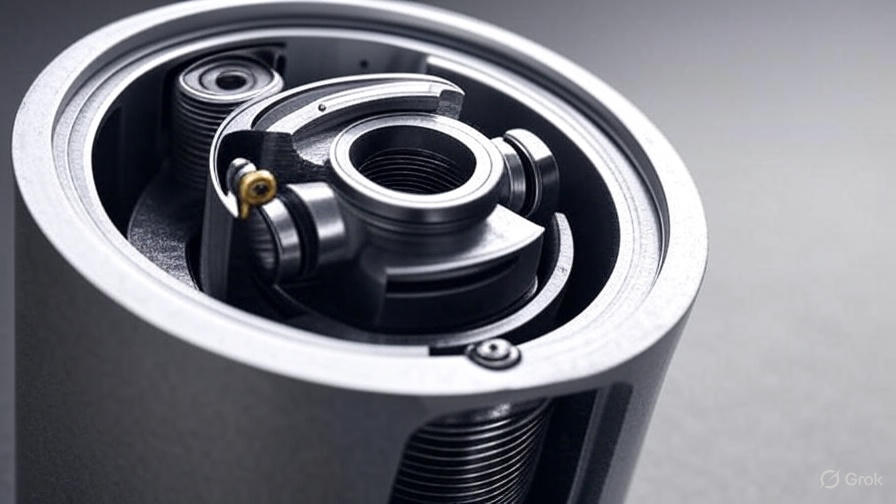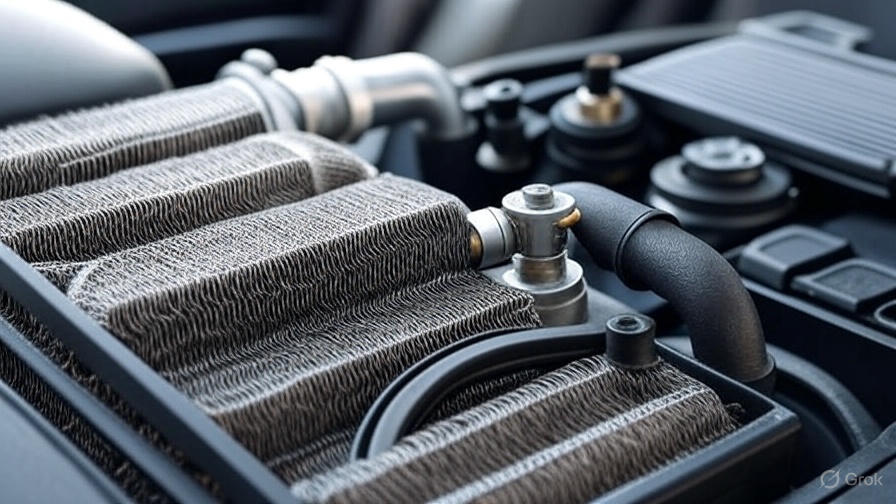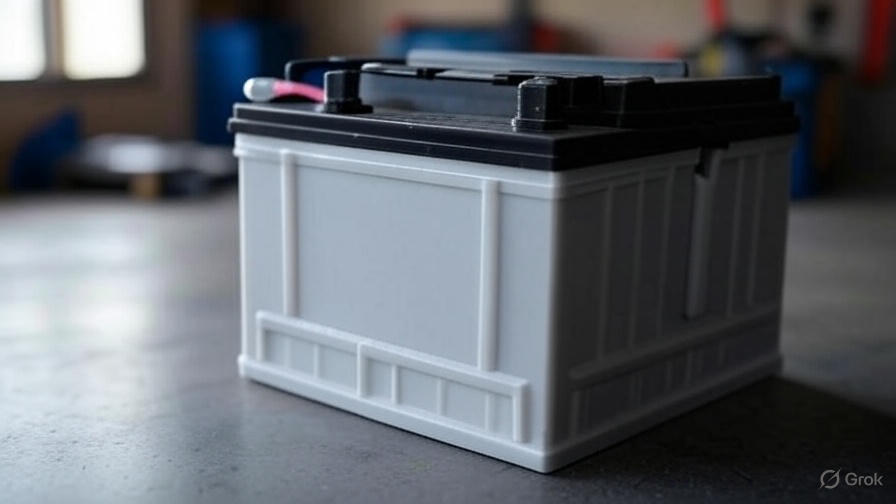Drivers often wonder about the fuel economy impact when upgrading to larger tires. The question “how bad will 35s ruin MPG” comes up frequently among truck enthusiasts and off-road vehicle owners. This comprehensive guide examines the real-world effects of installing 35-inch tires on your vehicle’s fuel consumption.
The truth is that 35-inch tires will impact your gas mileage, but the extent varies based on multiple factors. Understanding these variables helps you make an informed decision about whether the trade-offs are worth it for your driving needs and lifestyle.
The Science Behind Tire Size and Fuel Economy
Tire size directly affects several aspects of vehicle performance that influence fuel consumption. According to various studies done since the ’70s, tires take 15 to 25 percent of the mpg bite at low speeds and 20 to 35 percent at freeway speeds. This substantial impact stems from basic physics principles that govern how your vehicle moves down the road.
When you install larger tires, you’re changing the fundamental relationship between your engine’s power output and the work required to move your vehicle. Each rotation of a 35-inch tire covers more ground than a smaller tire, which alters your effective gear ratio. This change forces your engine to work differently than the manufacturer originally intended.
The increased diameter also means your engine must overcome more rotational inertia to get the wheels spinning. Think of it like trying to spin a large wheel versus a small wheel – the larger one requires more effort to start moving and more energy to maintain motion. This principle applies directly to your vehicle’s fuel consumption patterns.
Rolling resistance plays a crucial role in this equation. The Department of Energy estimates that 4 to 11 percent of fuel consumption is due to tire rolling resistance. Larger tires typically have higher rolling resistance due to their increased contact patch with the road surface and greater mass.
Real-World MPG Loss From 35-Inch Tires
The actual fuel economy impact of 35-inch tires varies significantly depending on your specific vehicle and driving conditions. You can expect a 1 to 2 mpg difference when upgrading from 33″ to 35″tires. The larger diameter, width, and circumference add to the unsprung weight which has a direct effect on fuel economy, performance, gearing, and other drivetrain components.
However, many drivers report more substantial losses in real-world conditions. 35s would probably be another 2-3 mpg hit according to experienced truck owners who have made this upgrade. Some drivers see even greater impacts, particularly in stop-and-go city driving where the increased rotational mass becomes most apparent.
The severity of mpg loss depends on several key factors. Your vehicle’s original gear ratios play a significant role – trucks with numerically lower gear ratios (like 3.21:1) tend to suffer more than those with higher ratios (like 3.73:1 or 4.10:1). The engine size and torque characteristics also influence how well your vehicle adapts to the larger tires.
Driving habits significantly affect the fuel economy penalty. Aggressive acceleration patterns become more costly with larger tires because more energy is required to overcome the increased rotational inertia. Highway cruising tends to show less dramatic differences, while city driving can reveal the full impact of the upgrade.
Why 35s Impact Fuel Consumption
Several interconnected factors explain why 35-inch tires reduce fuel economy. The primary culprit is unsprung weight – the mass of components not supported by your vehicle’s suspension system. Every pound of unsprung weight has a disproportionate effect on performance compared to sprung weight like cargo or passengers.
Unsprung weight affects acceleration, braking, and overall vehicle dynamics. When you install heavier 35-inch tires, your engine must work harder to accelerate this mass. The impact is particularly noticeable during stop-and-go driving where the engine repeatedly accelerates and decelerates the tire mass.
Aerodynamic changes also contribute to reduced fuel economy. Larger tires often protrude beyond the vehicle’s original body lines, creating additional wind resistance. This effect becomes more pronounced at highway speeds where aerodynamic drag requires exponentially more power to overcome.
The gear ratio change created by larger tires effectively makes your transmission think you’re driving in a “taller” gear. From 33″ to 35″ in height, you are affectively changing the gearing by six percent, which could have a six percent impact to mileage, or speedo reading This means your engine operates at lower RPMs for any given speed, which can push it out of its most efficient operating range.
Tire construction and tread pattern also influence fuel consumption. All-terrain and mud-terrain tires commonly used in 35-inch sizes typically have more aggressive tread patterns and stiffer sidewalls than highway tires. A really aggressive, heavy all-terrain tire can cause a vehicle to get 1 to 2 mpg less than it would with an ultra-fuel-efficient highway or street tire.
Comparison: 35s vs Stock Tire Sizes
The fuel economy difference between 35-inch tires and stock sizes becomes clear when examining specific examples. Most pickup trucks come with tire sizes ranging from 265/65R18 to 275/70R18, which translate to overall diameters between 31 and 33 inches. The jump to 35-inch tires represents a significant size increase.
Stock tires are carefully selected by manufacturers to balance fuel economy, ride quality, and performance for the average buyer. These tires typically feature highway-oriented tread patterns with lower rolling resistance compounds. The manufacturers also calibrate the gear ratios, engine management systems, and transmission programming around these specific tire sizes.
When you install 35-inch tires, you’re moving away from this carefully engineered balance. The increased diameter changes your vehicle’s final drive ratio, effectively making it “lazier” off the line but potentially more efficient at highway speeds – if the engine can maintain its optimal operating range.
Weight differences between stock and 35-inch tires can be substantial. A typical stock truck tire might weigh 45-50 pounds, while a 35-inch all-terrain tire often weighs 60-80 pounds or more. Multiply this by four tires, and you’ve added 60-120 pounds of unsprung weight to your vehicle.
The width difference also matters. Stock tires might be 265mm or 275mm wide, while many 35-inch tires are 315mm, 325mm, or even wider. This increased width creates more rolling resistance and requires more energy to push through the air at highway speeds.

Factors That Influence MPG Loss Severity
Vehicle weight significantly affects how much fuel economy you’ll lose with 35-inch tires. Heavier trucks like three-quarter-ton and one-ton models typically show less percentage-based mpg loss because the tire weight increase represents a smaller proportion of the total vehicle mass. Lighter trucks and SUVs often suffer more dramatic fuel economy penalties.
Engine size and torque output play crucial roles in determining mpg impact. Larger engines with more torque can better compensate for the increased rotational mass and altered gear ratios. Smaller engines may struggle more with 35-inch tires, leading to higher fuel consumption as they work harder to maintain performance.
Transmission type affects fuel economy changes as well. Manual transmissions allow drivers more control over engine RPM and can sometimes minimize the negative effects through careful gear selection. Automatic transmissions may hunt between gears more frequently with larger tires, especially if the shift points haven’t been recalibrated.
Differential gear ratios have perhaps the most significant impact on how well your vehicle adapts to 35-inch tires. Trucks with numerically higher gear ratios (3.73:1, 4.10:1, or higher) typically show less fuel economy penalty because they can better maintain engine RPM in the efficient operating range.
Driving terrain and conditions greatly influence fuel economy results. Highway driving shows the smallest mpg penalty because the engine operates at steady RPMs. City driving reveals the worst-case scenario because of frequent acceleration from stops. Mountain driving can be particularly challenging with 35-inch tires as the engine works harder to climb grades.
Tire Construction and Tread Pattern Effects
The specific tire you choose makes a substantial difference in fuel economy impact beyond just size. Tire manufacturers use different rubber compounds, internal construction methods, and tread patterns that significantly affect rolling resistance and fuel consumption.
All-terrain tires represent the most common choice for 35-inch applications, but they vary widely in fuel economy characteristics. Some modern all-terrain designs focus on reducing rolling resistance while maintaining off-road capability. These tires might only cost 1-2 mpg compared to stock, while aggressive mud-terrain tires could reduce fuel economy by 3-4 mpg or more.
Sidewall construction affects fuel economy through both weight and rolling resistance. Tires with stiffer sidewalls typically weigh more and create more rolling resistance. However, they also maintain their shape better under load, which can actually improve efficiency in some driving conditions.
Tread depth and pattern design influence rolling resistance significantly. Deeper lugs and more aggressive void patterns create more surface area in contact with the road, increasing friction and reducing fuel economy. Highway-oriented 35-inch tires are rare but would show much better fuel economy than aggressive off-road designs.
Load rating requirements often force compromises in tire construction that affect fuel economy. Most 35-inch tires carry heavy-duty load ratings with reinforced construction that adds weight and stiffness. This construction is necessary for off-road use but comes with fuel economy penalties.
Strategies to Minimize MPG Loss
Several modifications can help reduce the fuel economy impact of 35-inch tires. Gear ratio changes represent the most effective approach for maintaining performance and fuel economy. Installing numerically higher differential gears can restore much of your vehicle’s original performance characteristics and help minimize mpg loss.
Most truck owners find that changing from stock 3.21:1 or 3.42:1 gears to 3.73:1 or 4.10:1 ratios significantly improves driveability with 35-inch tires. The higher gear ratios allow the engine to operate closer to its designed RPM range, improving both performance and fuel economy compared to running large tires with stock gearing.
Speedometer and odometer recalibration is essential for accurate fuel economy measurements. Larger tires cause these instruments to read low, making your actual fuel consumption worse than indicated. Professional recalibration or aftermarket tuning can correct these readings and optimize transmission shift points.
Performance tuning can help minimize fuel economy losses by adjusting engine and transmission parameters for the larger tires. Custom tuning can modify shift points, throttle response, and fuel delivery to work more efficiently with the altered vehicle dynamics. However, results vary depending on the specific vehicle and tuning quality.
Driving technique modifications can help preserve fuel economy with larger tires. Gentler acceleration patterns become more important because the increased rotational inertia amplifies the energy cost of aggressive driving. Maintaining steady highway speeds and anticipating traffic flow changes can help offset some of the inherent efficiency losses.
When 35s Make Financial Sense
Despite the fuel economy penalty, 35-inch tires make financial sense for many drivers depending on their priorities and usage patterns. Off-road enthusiasts who regularly encounter challenging terrain often find the capability gains worth the fuel costs. The improved ground clearance, traction, and durability can prevent costly recovery situations or vehicle damage.
Work truck applications sometimes justify 35-inch tires despite mpg losses. Construction, landscaping, and agricultural users who need maximum traction and durability may find that the improved productivity and reduced downtime offset higher fuel costs. These users often prioritize capability over fuel economy.
Regional factors affect the financial equation as well. Areas with consistently challenging driving conditions – heavy snow, muddy job sites, or rough terrain – favor larger tires. Urban areas with mainly highway driving make the fuel economy penalty harder to justify unless recreational use drives the decision.
Fuel price considerations play a major role in the financial analysis. When gas prices are low, the monthly cost increase from reduced mpg is manageable for many budgets. Rising fuel prices make the penalty more significant and may tip the scales against larger tires for budget-conscious drivers.
Vehicle usage patterns determine whether 35-inch tires make economic sense. High-mileage commuters face substantial fuel cost increases, while weekend-only drivers might find the annual impact negligible. Consider your actual annual mileage when calculating the real-world cost of reduced fuel economy.
Long-term Cost Analysis
The financial impact of 35-inch tires extends beyond just fuel costs. Initial tire purchase prices are substantially higher than stock sizes, often $200-400 more per tire. This upfront cost must be factored into the total cost of ownership equation when deciding whether to upgrade.
Tire wear patterns can differ significantly with 35-inch tires, especially if gear ratios aren’t changed to compensate. Vehicles that struggle with the larger tires may experience faster tire wear due to increased drivetrain stress. However, many 35-inch tires are built more durably than stock tires, potentially lasting longer despite the increased load.
Drivetrain stress increases with larger tires can lead to premature wear of transmissions, differentials, and CV joints. The long-term reliability impact varies by vehicle, but some owners report earlier transmission rebuilds or differential service needs. These potential costs should be considered in the total ownership equation.
Resale value effects can be positive or negative depending on the target buyer market. Trucks equipped with quality 35-inch tires and proper supporting modifications often command premium prices from enthusiasts. However, some buyers prefer stock configurations, which could limit your potential buyer pool.
Insurance implications are generally minimal for tire size changes alone, but comprehensive coverage values may need adjustment if you’ve significantly increased the vehicle’s modification level. Some insurers offer discounts for off-road capability improvements that enhance vehicle recovery options.
Alternative Solutions and Compromises
For drivers who want some of the benefits of larger tires without the full fuel economy penalty, several compromise solutions exist. 33-inch tires represent a middle ground that provides meaningful capability improvements while minimizing mpg loss. Many popular 33-inch options offer excellent off-road performance with fuel economy impacts of just 1-2 mpg.
Load range considerations can help balance durability needs with fuel economy concerns. Some drivers opt for passenger-rated 35-inch tires instead of light truck versions to save weight and improve fuel economy. This approach works well for recreational users who don’t need maximum load capacity.
Seasonal tire strategies let you optimize for different conditions throughout the year. Running stock or highway tires during commute-heavy periods and switching to 35s for off-road seasons can minimize annual fuel costs while maintaining capability when needed. This approach requires storage space and seasonal changeout costs.
Hybrid approaches using 34-inch tires can provide most of the ground clearance benefits with less fuel economy penalty. The 34-inch size is close enough to stock that some vehicles show minimal mpg loss while still providing meaningful off-road improvements.
Making the Right Decision
The decision to install 35-inch tires ultimately depends on your priorities, budget, and usage patterns. Drivers who regularly encounter challenging off-road conditions often find the capability gains worth the fuel economy trade-off. Urban commuters with occasional off-road use may find the daily mpg penalty harder to justify.
Calculate your specific cost impact based on annual mileage, fuel prices, and expected mpg loss. A conservative estimate of 2-3 mpg reduction helps you project annual fuel cost increases. Compare this to the benefits you expect to gain from improved capability, appearance, or utility.
Consider the total modification package required to optimize 35-inch tire performance. Gear changes, suspension modifications, and potential tuning costs should be factored into your budget. A properly executed 35-inch tire upgrade with supporting modifications often provides better results than tires alone.
Test drive vehicles with similar tire setups when possible to experience the real-world impact on performance and fuel economy. Online forums and local enthusiast groups can provide valuable insights from owners with similar vehicles and usage patterns.
The question of “how bad will 35s ruin MPG” doesn’t have a universal answer because it depends on numerous vehicle-specific and usage-specific factors. However, being prepared for a 2-4 mpg reduction in most applications helps set realistic expectations while allowing you to make an informed decision based on your priorities and budget constraints.
With proper planning, supporting modifications, and realistic expectations about fuel economy impacts, many drivers find that 35-inch tires provide worthwhile benefits that justify the increased fuel costs. The key is making the decision with full awareness of both the benefits and penalties involved.



